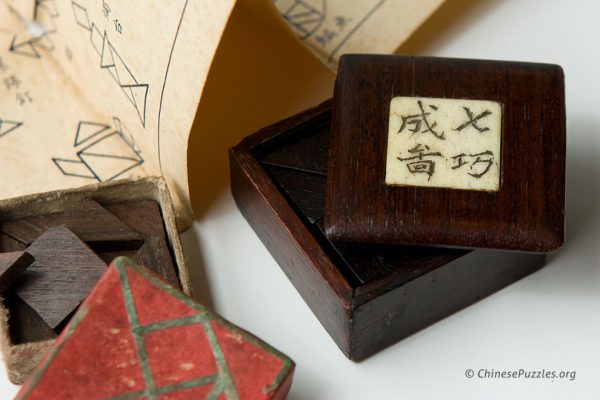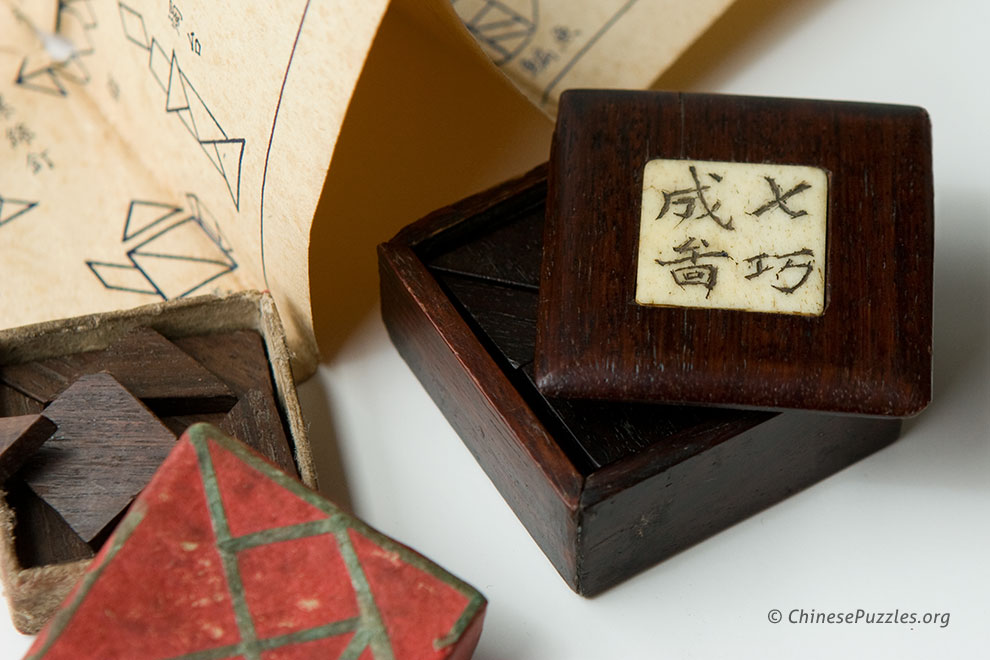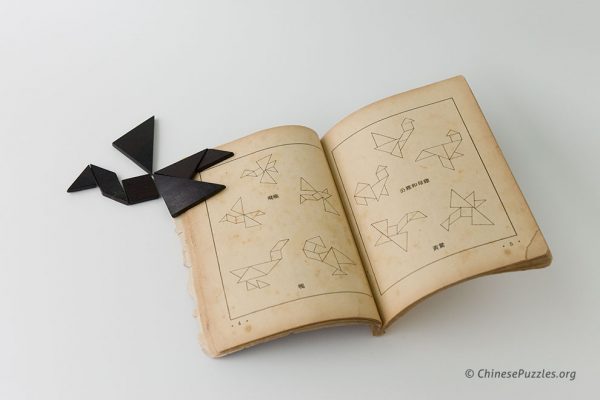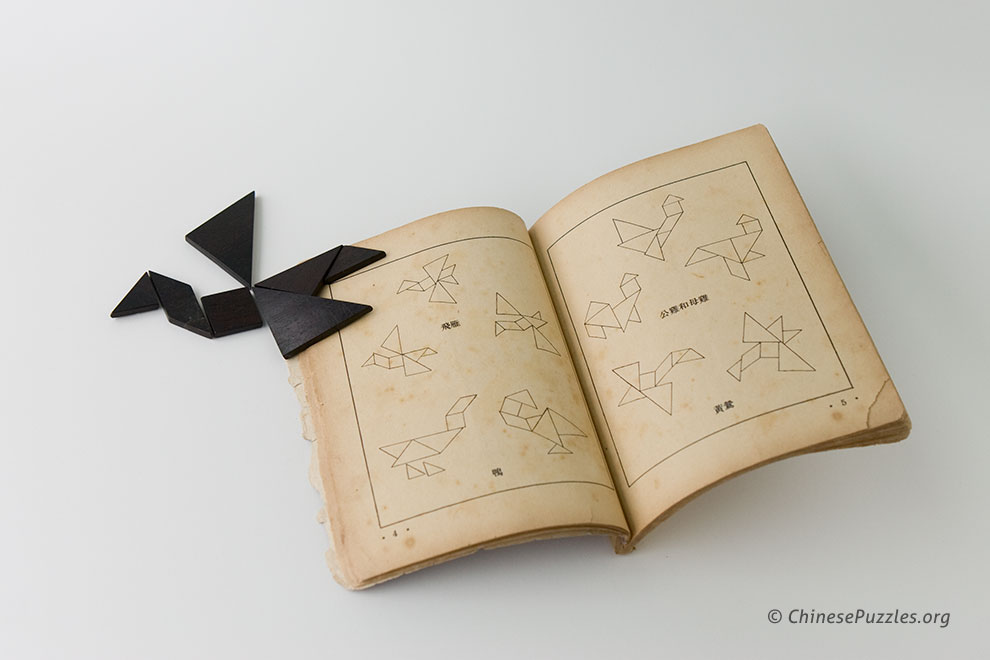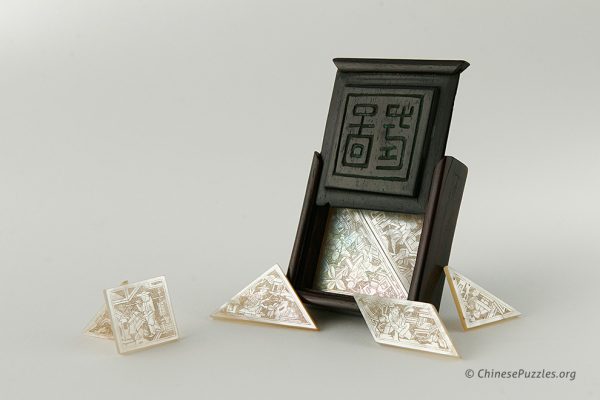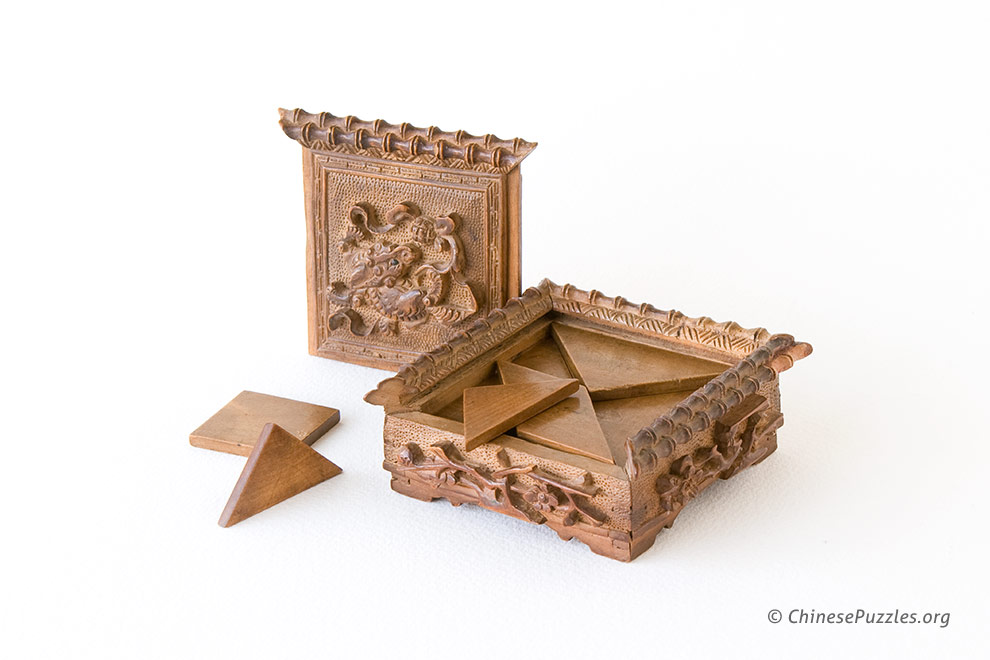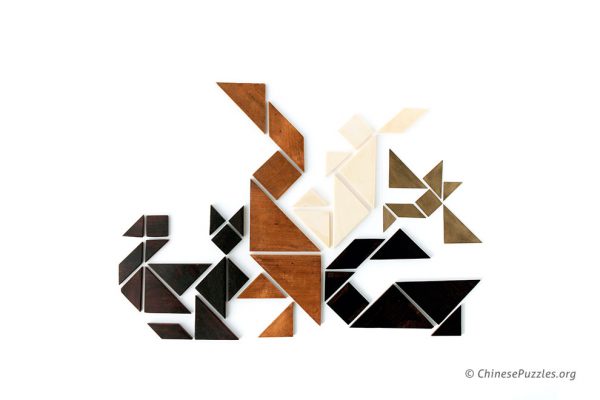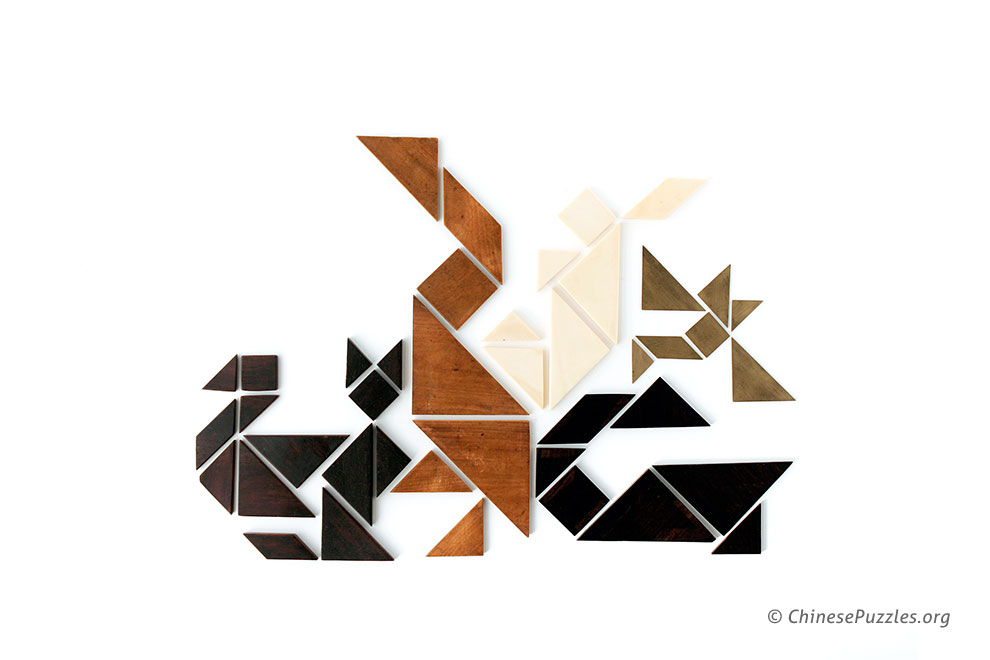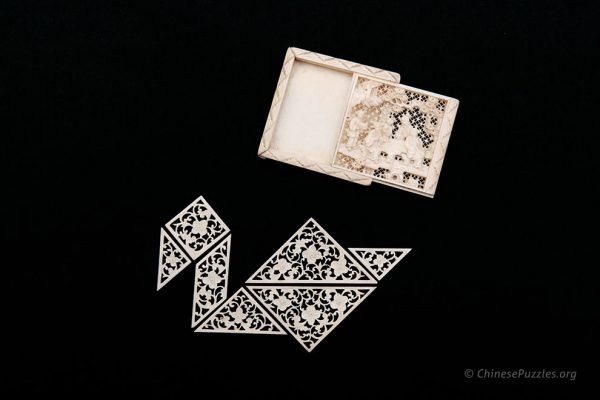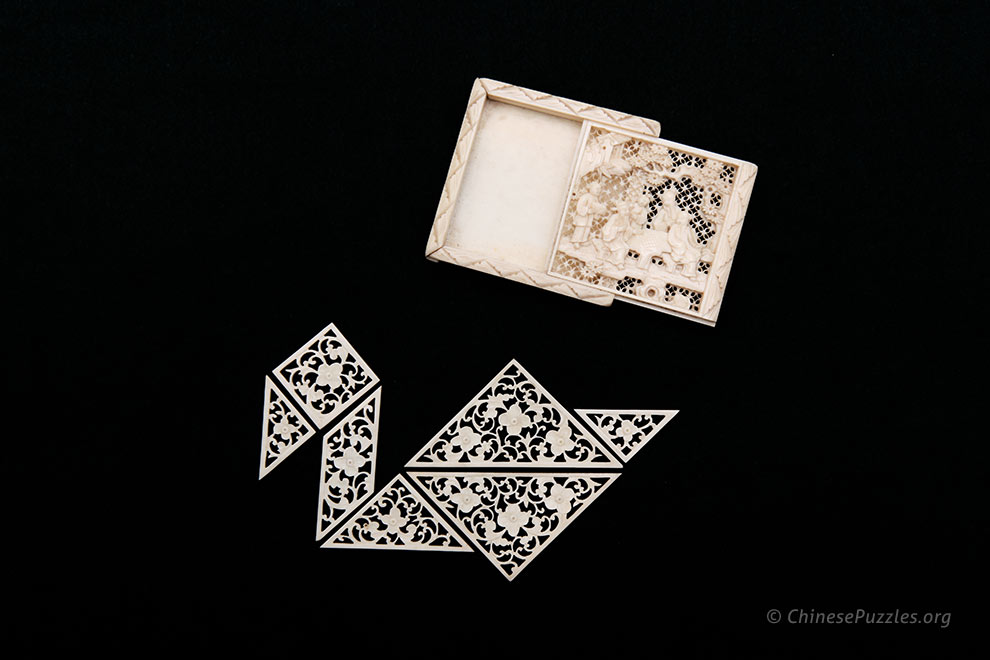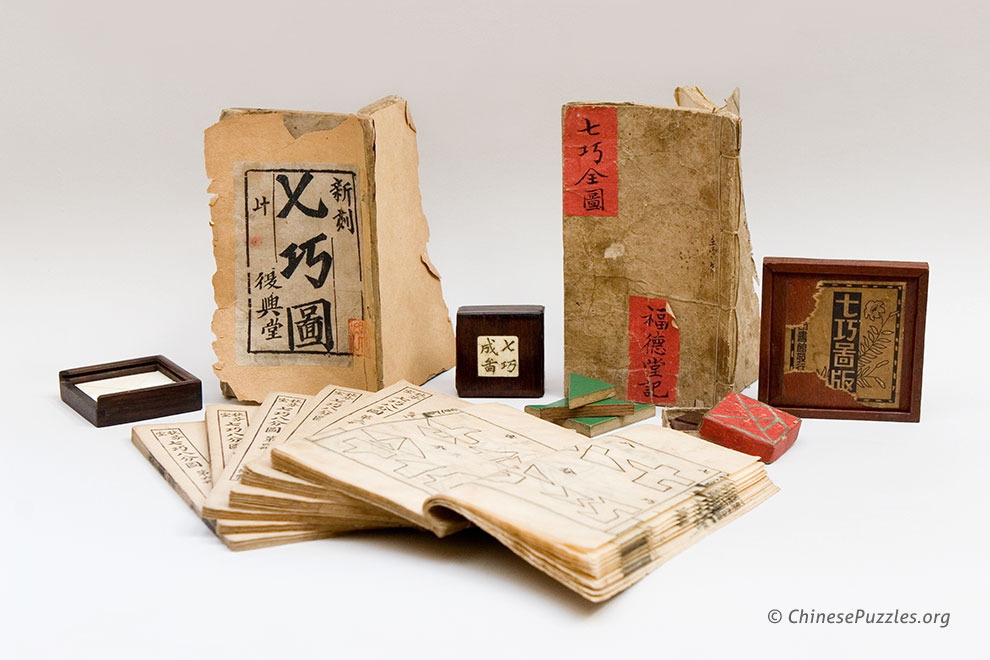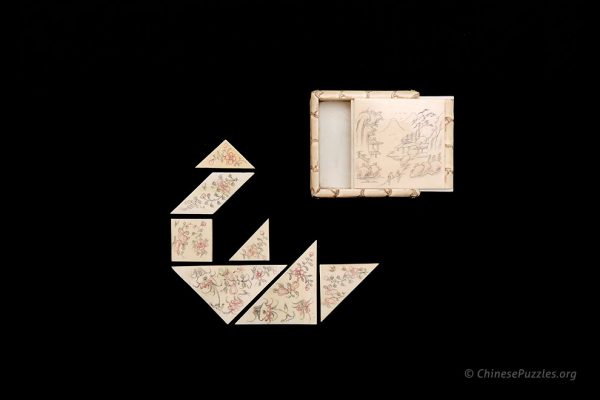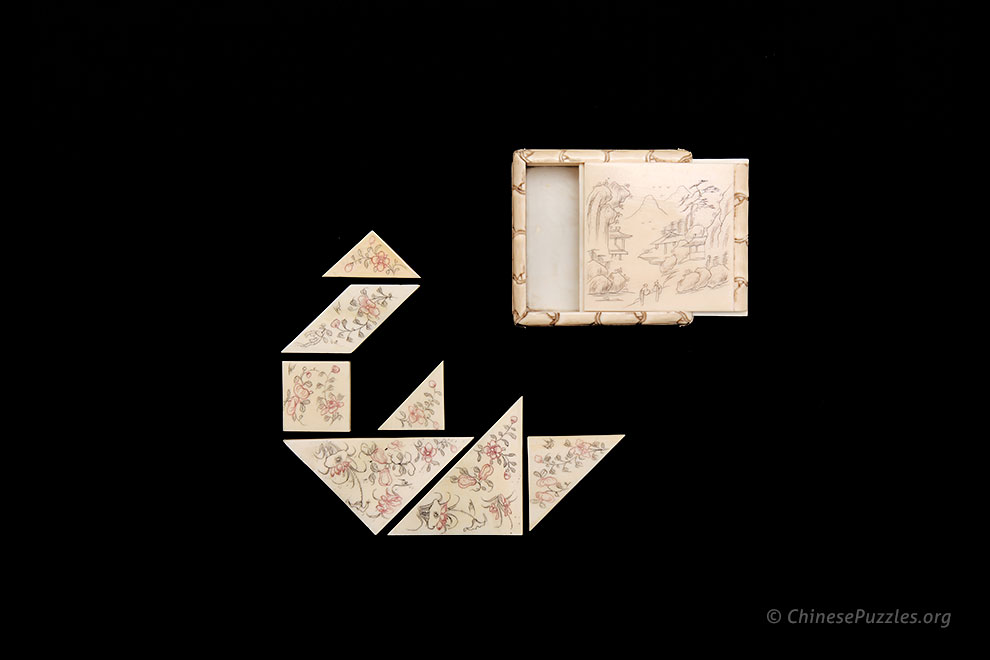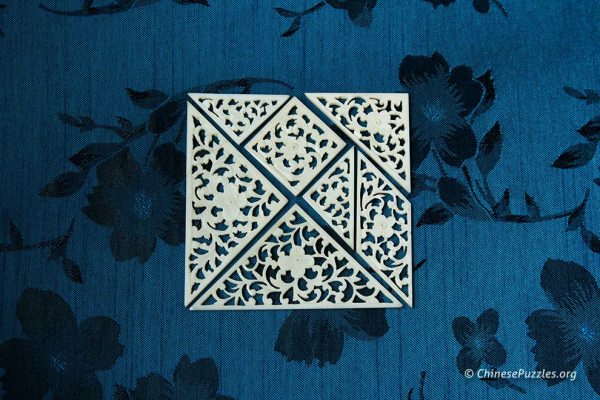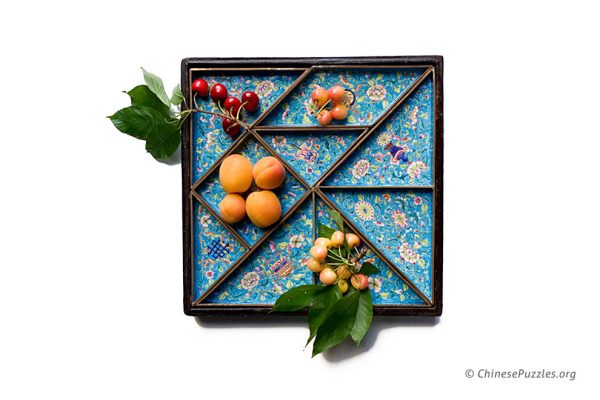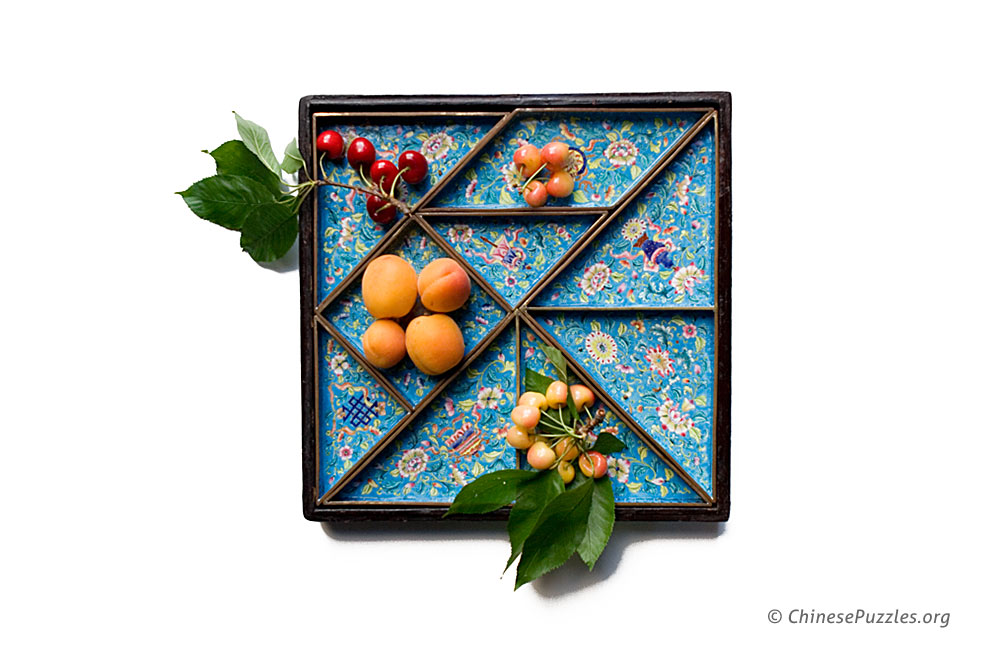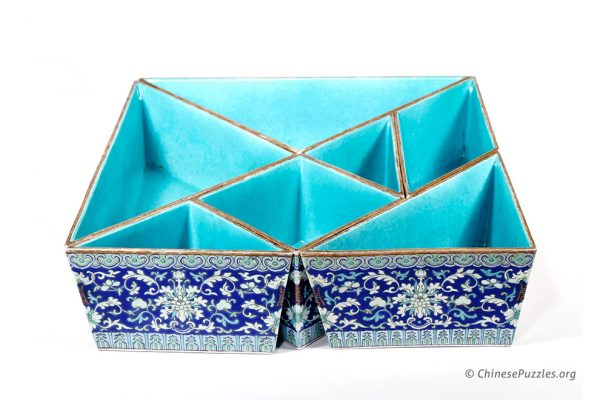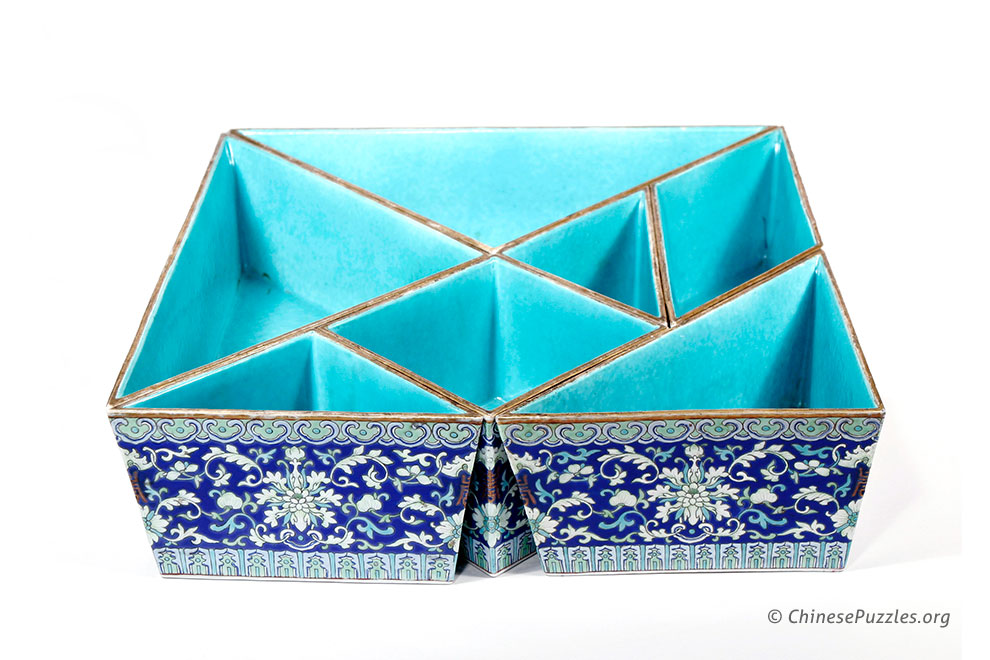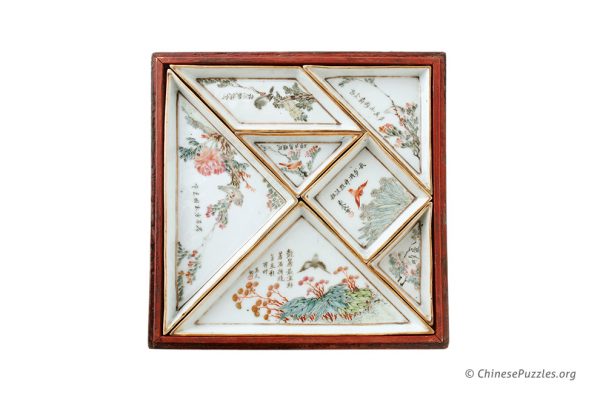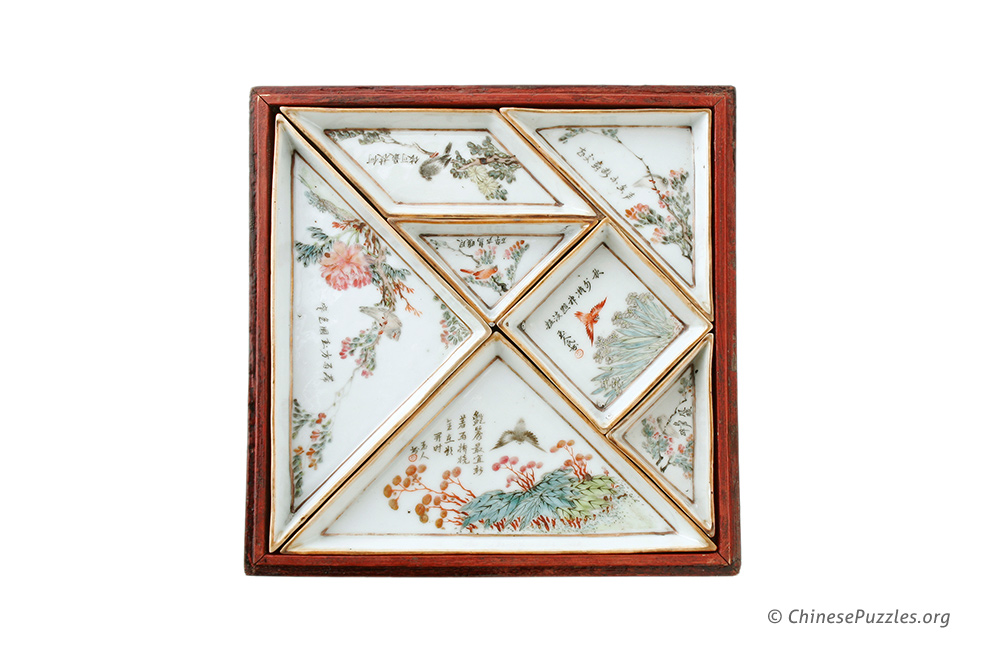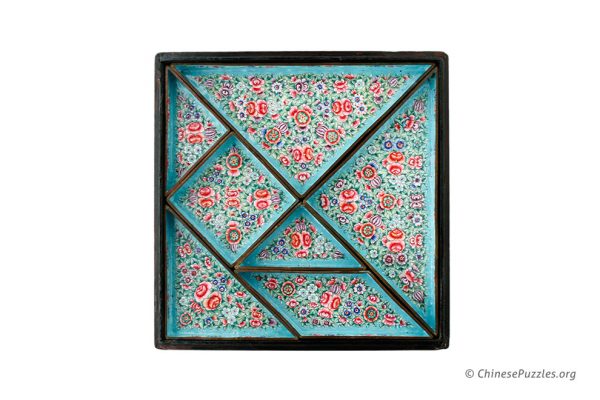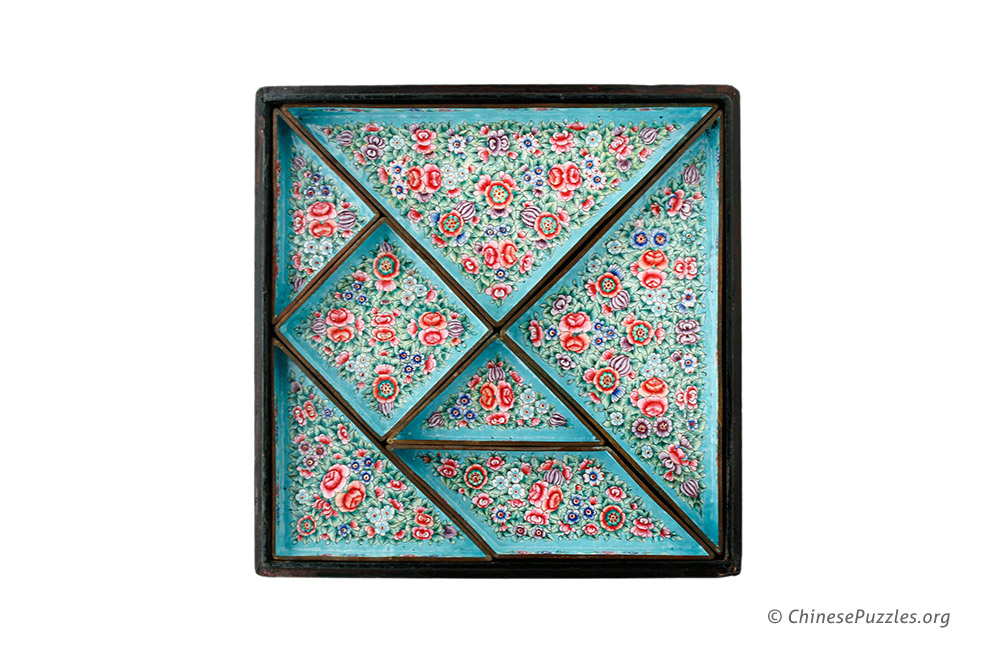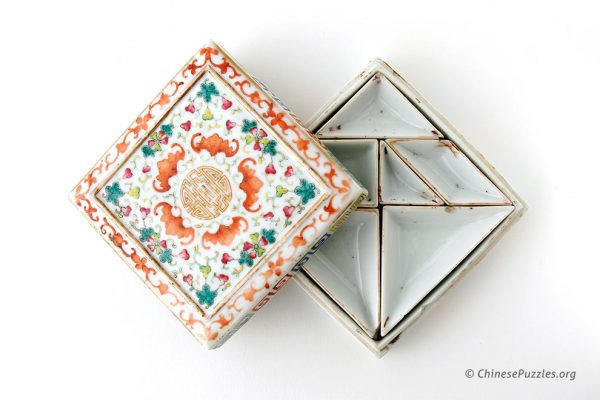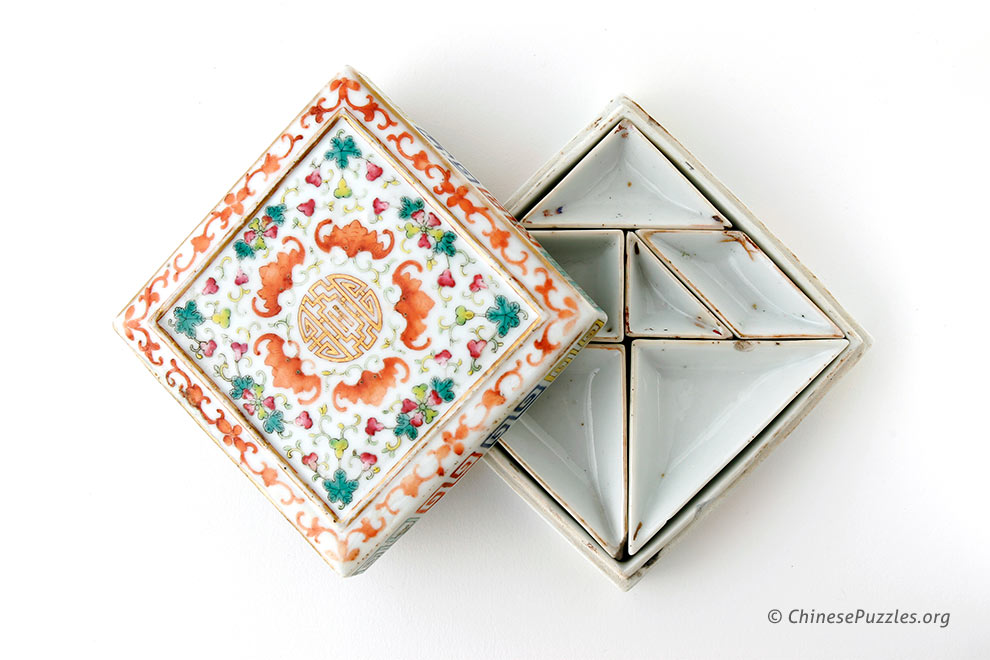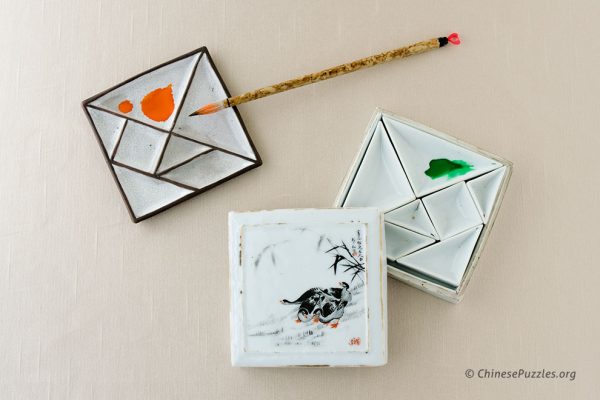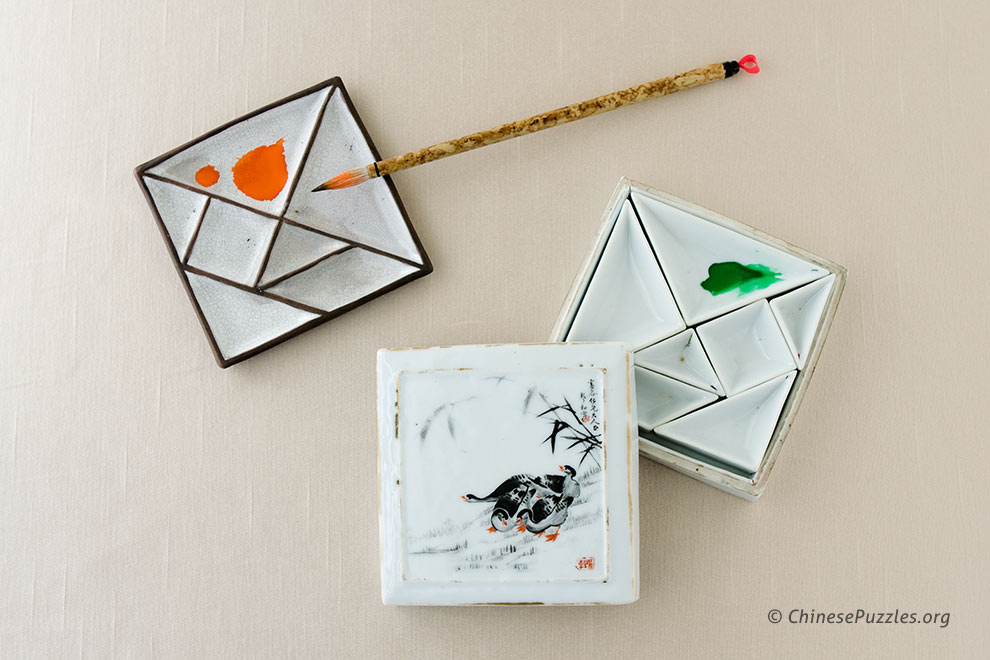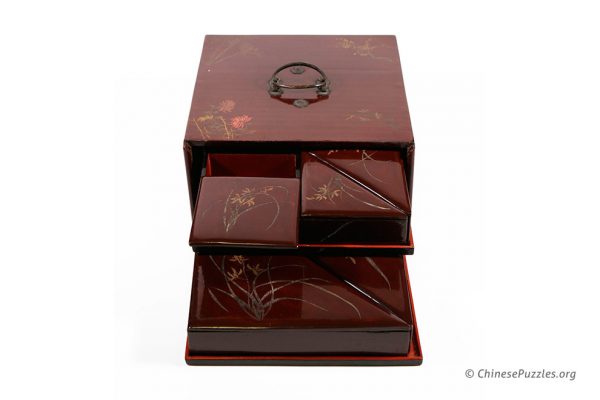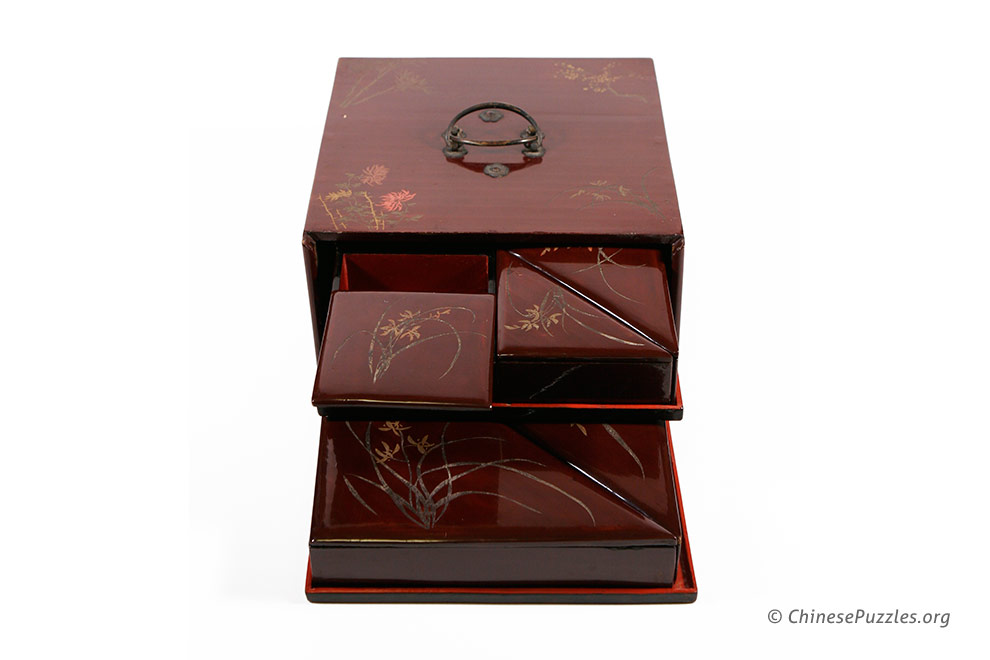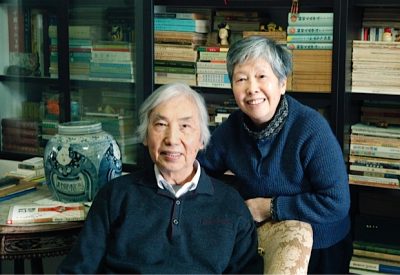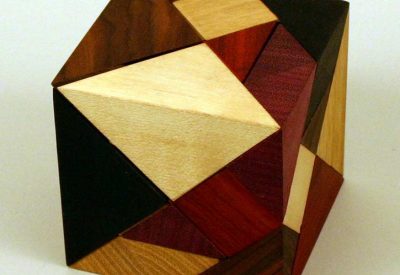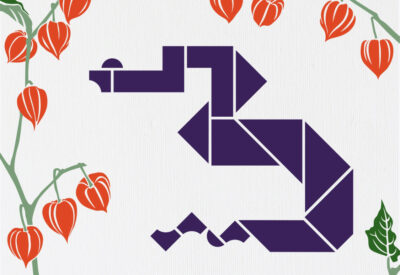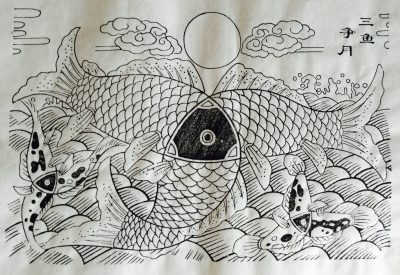Tangram Arrangements
The tangram puzzle consists of seven flat pieces and a collection of simple outline diagrams or silhouettes. The pieces—which can be arranged to form a square—consist of two large triangles, one medium triangle, two small triangles, one square, and one parallelogram. They can be made of wood, ivory, metal or some other material.
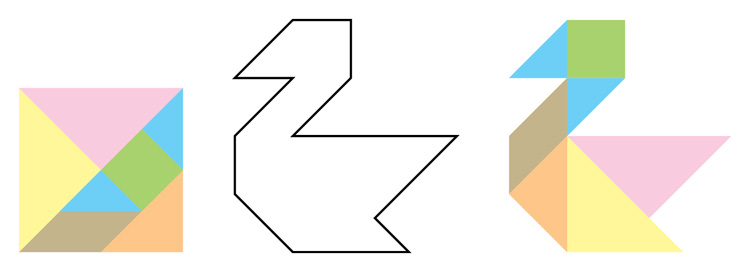
The diagrams can be pictures of objects, landscapes, animals, or even human figures in various positions. The objective of the puzzle is to place all seven pieces on a flat surface (without any pieces overlapping) to form the same shape as one of the diagrams.
The Origin of Tangram
Many Chinese scholars believe the roots of the tangram puzzle date back to the Northern Song dynasty (960–1127), when Huang Bosi (1079–1118) invented a set of rectangular tables and a collection of diagrams showing how the tables could be arranged in a variety of configurations to seat guests at banquets. There were seven tables in the set, and they were made in three different lengths. Huang Bosi called them “banquet tables” and described them in his book Banquet Table Diagrams:
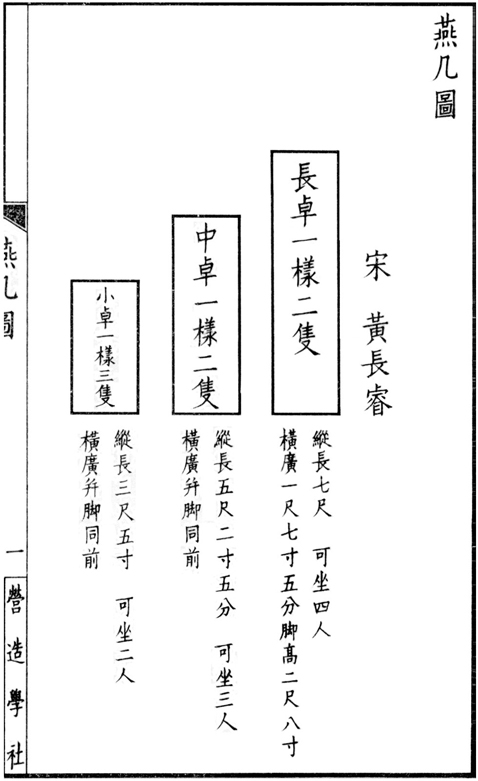
banquet tables

all seven tables

banquet arrangements
Huang Bosi’s banquet tables led to the creation of another more versatile set of tables during the Ming dynasty (1368–1644). These were called “butterfly tables” and were described by Ge Shan in his 1617 book Butterfly Table Diagrams. There were a total of thirteen tables in the set, and they came in six shapes and sizes of triangles and trapezoids. Ge Shan called them butterfly tables because their angular shapes resemble the wings of butterflies.
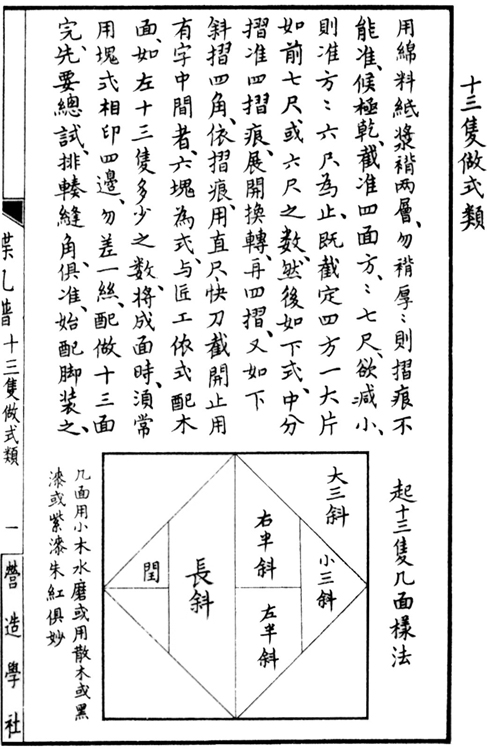
forming a square
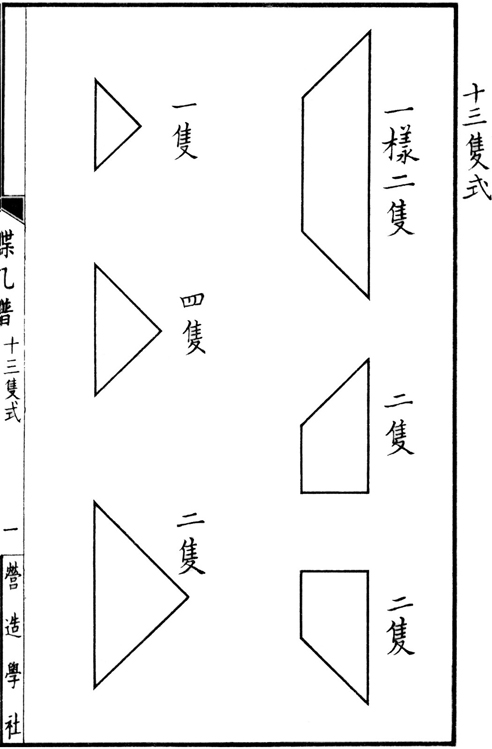
in six different shape
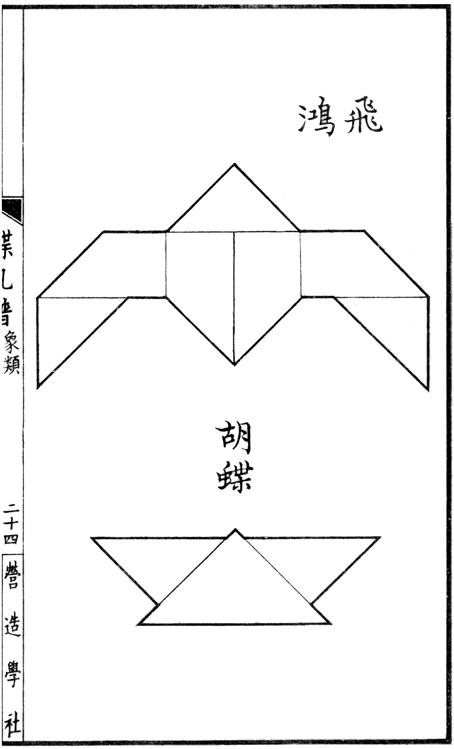
of butterflies
A simplified version of the butterfly tables appeared appeared around the turn of the 18th century. This was the seven-piece tangram puzzle we know today. The earliest known tangram diagrams were published in a 1813 book Complete Tangram Diagrams by Bi Wu Jushi (“scholar of the green parasol tree”) with diagrams by Sang Xia Ke (“guest under the mulberry tree”).
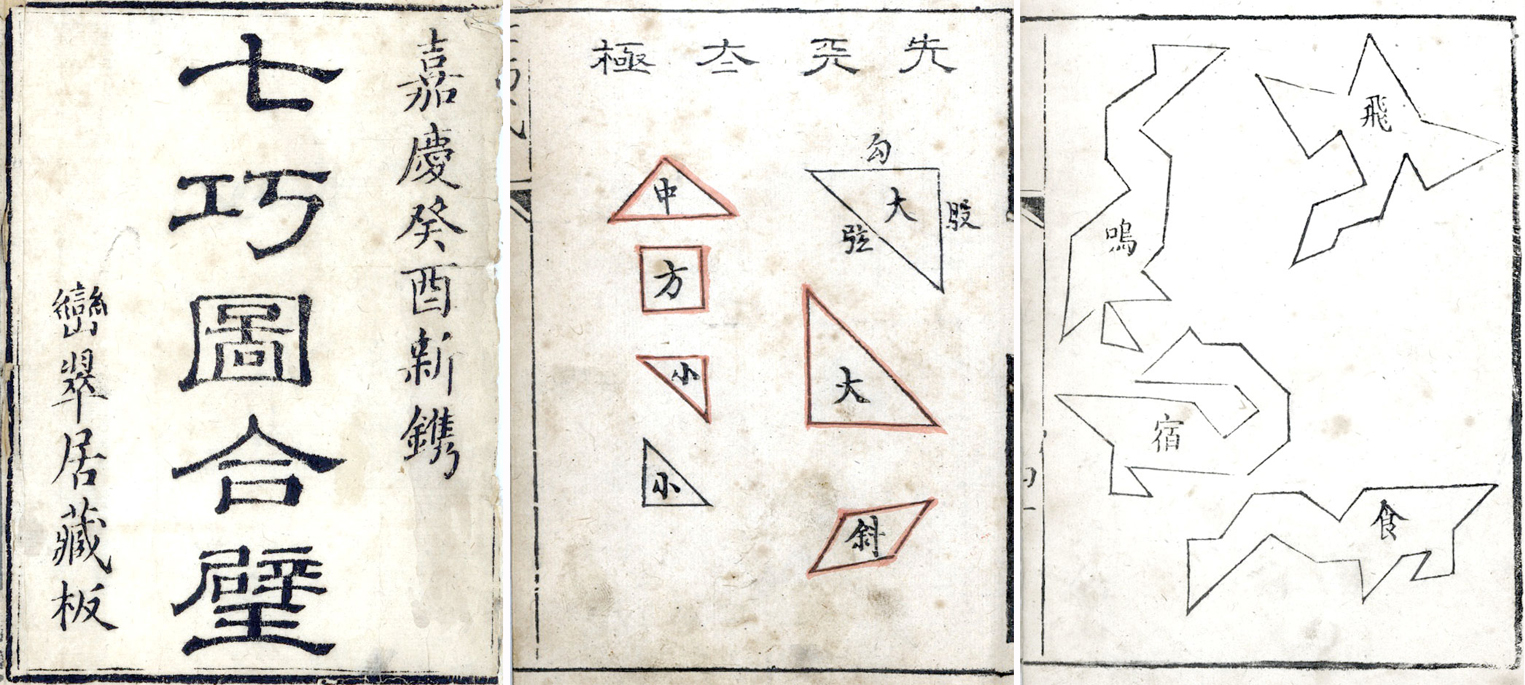
Early Tangram Puzzles
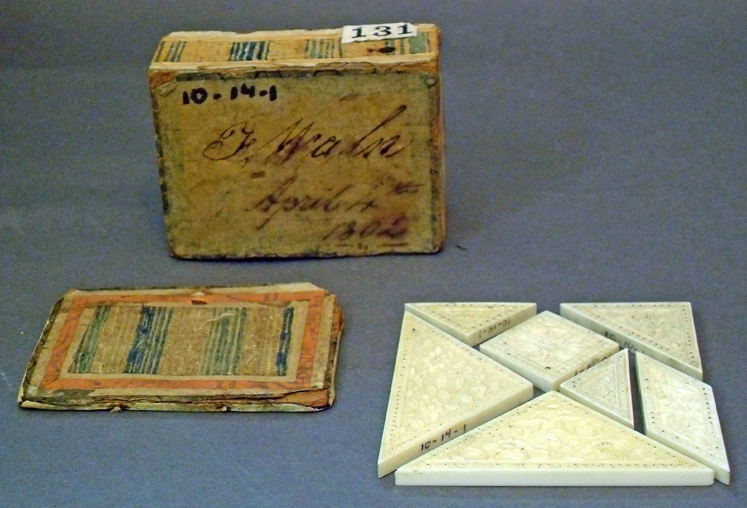
Courtesy of Ryerss Museum, Philadelphia
A set of carved ivory tangram pieces was brought to America around 1802. It was probably purchased in Canton by an employee of Robert Waln (1765–1836), a prominent Philadelphia importer who had an interest in at least twelve ships trading with Canton between 1796 and 1815. The bottom of the puzzle’s small silk-brocade-covered pasteboard box is inscribed, F. Waln April 4th 1802, and the puzzle may have been a gift to Francis Waln (1799–1822), the fourth child of Robert and Phebe Waln.
Other western merchants doing business in Canton also took home Chinese tangram puzzles and books, and soon a tangram craze swept across Europe and America. During 1817 and 1818, tangram books were published in England, France, Switzerland, Italy, the Netherlands, Denmark, Germany, and the United States.

In China, the popularity of the work by Bi Wu Jushi and Sang Xia Ke stirred many new tangram enthusiasts and entrepreneurs to follow in their footsteps. They created additional tangram figures and published their own collections of diagrams. During the last half of the Qing dynasty, tangram enjoyed great popularity among common people, scholars, and the wealthy—including the imperial family. Fancy tangram sets were also produced in the workshops of Canton for sale to foreign merchants eager for curios to take home to their families, friends, and sponsors.
Tangram Tables
During the mid to late Qing dynasty, sets of tangram-shaped tables were created out of high-quality wood and sometimes embellished with carving or with burlwood or marble tops. While it’s quite certain that the tangram puzzle descended from Huang Bosi’s banquet tables and Ge Shan’s butterfly tables, there’s no evidence that shows whether tangram tables preceded the puzzle or vice versa.
There are two places in China where antique tangram table sets are still on display to the public. Suzhou in Jiangsu Province is well known as an ancient center of art, scholarship, and culture. It is also the home of many famous gardens, including the Garden for Lingering (Liuyuan). Inside one of the Garden for Lingering’s pavilions is what at first appears to be a pair of square game tables with removable wooden covers. One cover is inscribed with a Chinese chess (xiangqi) board and the other with a Go (weiqi) board. But upon removing the two covers one discovers a complete set of tangram tables. Two large triangular tables lie under one cover, and tables in the shapes of the five smaller tangram pieces lie under the other. The tables are made of blackwood (hongmu) in the typical Suzhou style, with inset marble tops and a “cracked ice” pattern filling in the space between the bottom stretchers.
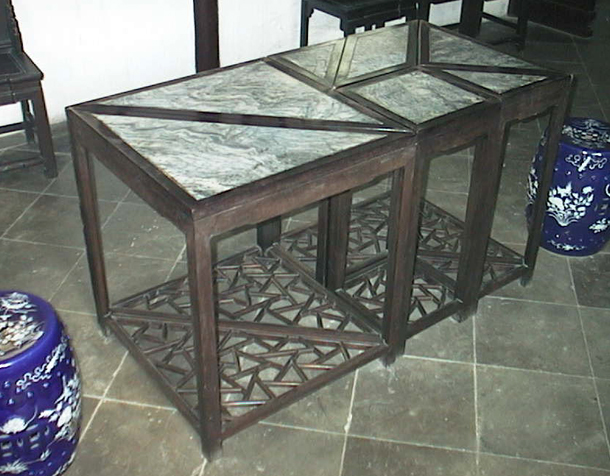

Beijing also hosts a collection of tangram tables. These tables are also hidden, for they are located in a locked building, and one can only see the entire set by peeking in through several different windows. Fortunately, the building, the Hall of Dispersing Clouds (Paiyundian), is located in the Summer Palace (Yiheyuan) and is accessible to the public. The Hall of Dispersing Clouds was built in 1750, rebuilt in 1890, and was the location of Empress Dowager Cixi’s birthday celebration each year.
Four complete sets of blackwood (hongmu) tables—twenty-eight in all—are on display. There are two full-size sets with ten tables arranged to form a large hexagon and the other four tables arranged in two pairs. And there are also two sets of shorter tangram tables, arranged in a group of ten and another group of four.
Tangram Condiment Dishes
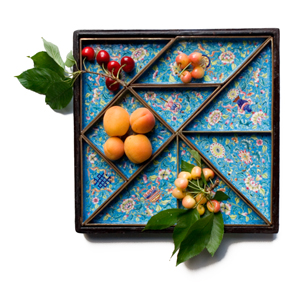
During the nineteenth and early twentieth centuries tangram was so popular that sets of condiment or “sweetmeat” dishes were made in the shapes of the seven tangram pieces. The seven dishes were usually set into a specially made square box with a lid and were brought out to serve guests during Chinese New Year and on other special occasions.
Civil servant and porcelain collector Chen Liu, described tangram condiment dishes in his 1910 classic reference on porcelain, Notes on Porcelain (Tao ya), as follows:
Rice cakes and condiments, commonly called ‘pastry’ and also known as ‘cold food’, are distributed among porcelain dishes shaped like tangram, and are, therefore, called divided dishes, popularly known as condiment dishes…. Some are export porcelain pieces colored with flowers and birds, the craftsmanship unsurpassed.
The kilns of Jingdezhen, China’s porcelain capital, produced sets of tangram condiment dishes, paint dishes, and cups in a remarkable number of sizes and styles. The dishes could be large or small, deep or shallow, and their sides could be vertical or formed to slope outward.
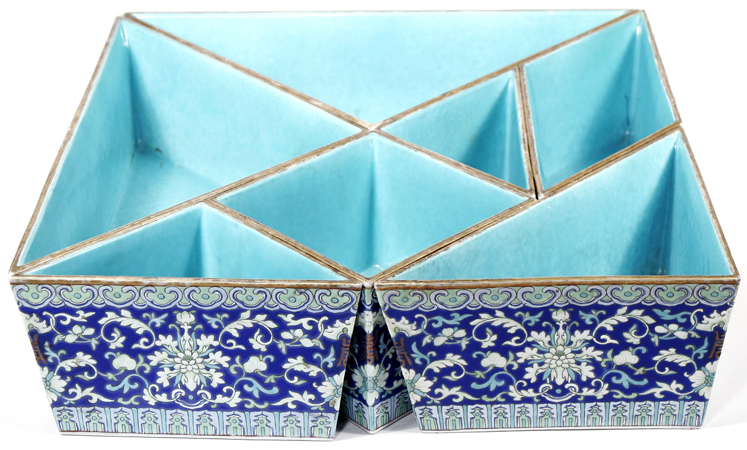
Jingdezhen, Jiangxi; Qing dynasty, Tongzhi reign (1862–1874)
37.0 x 37.0 x 10.0 cm
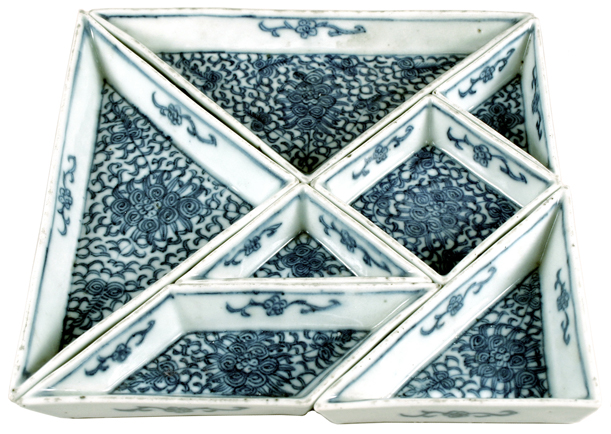
Jingdezhen, Jiangxi; Qing dynasty, Daoguang reign (1821–1850)
19.7 x 19.7 x 2.1 cm
The most striking indication of the popularity of tangram dishes is the great variety of themes and patterns with which they were decorated. Examples include scenes from stories and operas, butterflies, birds and flowers, landscapes, mythical creatures, and calligraphy.

Tangram condiment sets, paint dishes, and trays were also made of Yixing clay, lacquer, wood, and Canton enamel. While most tangram dish sets consist of seven individual dishes that can be moved around, there are also examples in which the tangram pattern is used to divide a single dish or tray into seven immovable compartments.
Read More
Peter Rasmussen, Wei Zhang, and Niana Liu. Zhongguo chuantong yizhi youxi (Traditional Chinese Puzzles). Beijing: Sanlian Shudian, 2021. See pages 78–189. In Chinese.
